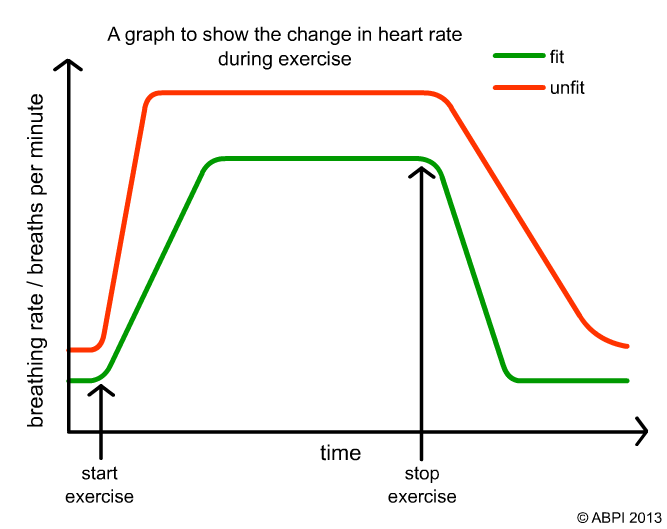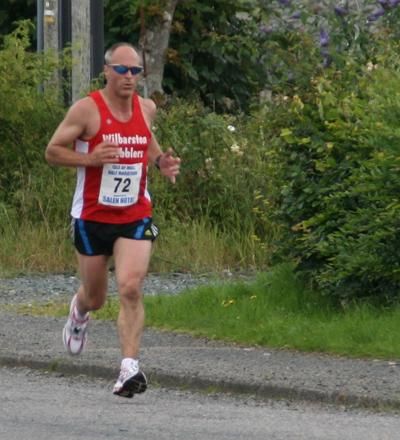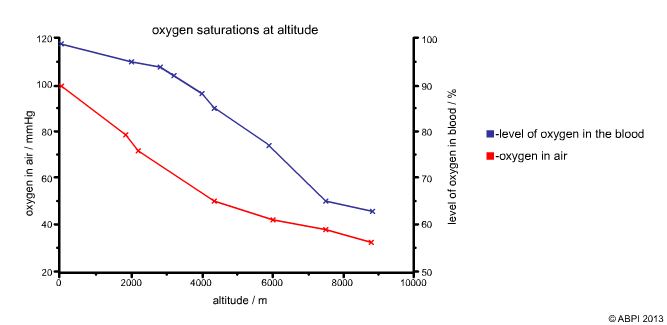This topic takes on average 55 minutes to read.
There are a number of interactive features in this resource:
 Human biology
Human biology
 Biology
Biology
 Physical education
Physical education
When you are asleep or sitting quietly, you move about 500 cm3 of air in and out of your lungs between 12 and 14 times a minute. This is called resting breathing. It supplies the oxygen needed for the cells of your body to grow, for the muscles which keep you upright, for your heart and gut muscles and all the other processes which take place whether you are awake or asleep.
However, as soon as you start to do things the oxygen demand of your body cells increases. Your breathing changes to meet those demands. You can get more oxygen into your body – and get rid of more carbon dioxide – both by breathing more deeply and by breathing faster. Often you do both!
It isn’t only exercise that affects your breathing rate – stress and anxiety, drugs, being overweight and changes in the environment can all change the rate at which you breathe.
When you exercise, the muscle cells which move your skeleton contract harder and faster than when you are still. As a result they need more oxygen to break down glucose and supply the energy they need by aerobic respiration. They also produce more carbon dioxide which has to be removed to keep your muscles working effectively. Your breathing rate goes up. You breathe more deeply so the volume of air you take in with each breath goes up too.
If you exercise really hard you can’t get enough oxygen and your muscle cells respire anaerobically. This means that even after you stop exercising you still need more oxygen that usual to make sure that the lactic acid produced during anaerobic respiration is completely broken down to give carbon dioxide and water. This is why you continue to puff and pant even when you have stopped exercising hard.
If you exercise regularly, you get fitter. Your lungs get bigger and develop a better blood supply. This means you breathe more efficiently. A fit person will have a slower resting breathing rate than an unfit person, and they will recover more quickly after exercise.

The change in breathing rate during and after exercise in a fit person and an unfit person

Even though this man is fit, he still breathes faster and more heavily during and after exercise. (Photo credit: Anthony Short)
As you climb above sea level, the atmospheric pressure of the air gets lower, and so does the oxygen level in the air. Once you climb about 3,650 metres above sea level there is a noticeable lack of oxygen in the air. Your breathing rate will increase to try and keep up the levels of oxygen in the blood. People can feel very ill at high altitudes.
If you stay at altitude for a time, your body will begin to adapt. Your lungs get bigger so you can take more air in with each breath. The blood supply to the lungs increases and you make more red blood cells to carry the oxygen. This is why athletes often chose to train at altitude – the extra ability to carry oxygen is useful when they come down and compete at sea level!

High altitudes have significant effects on our breathing

Increasing altitude affects the oxygen levels in the air and the amount of oxygen in the blood.
It is very important that your breathing rate is well controlled. If you do not breathe in enough oxygen your cells and tissues do not work efficiently and eventually you will die.
If there is not enough carbon dioxide in the blood this causes problems and so does too much carbon dioxide. Both affect the pH of the blood which in turn affects enzymes, membranes and many chemical reactions in the body.
The needs of your body can change very rapidly too. Your breathing system has a number of different control systems which make it possible for your body to respond rapidly, so that the balance of oxygen and carbon dioxide in the blood remains at ideal levels.